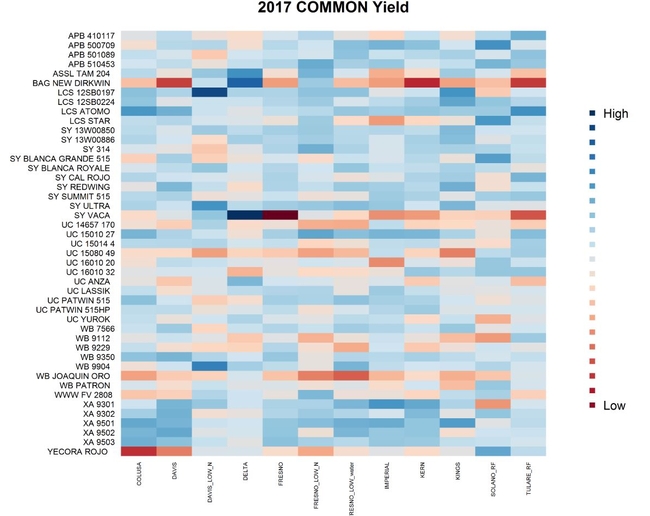Fall has arrived, and for many crops, this means that it is harvest season. For small grains, however, the season starts anew. The UC Davis small grains variety evaluations are conducted across the state, including a site in the Delta. The results of last year's evaluations are now available, and we invite you to take a look as you prepare to plant your new crop.

To understand trends over time, we suggest reviewing the 3-year summaries, which are available from the link “Yield and Protein Summary” for common wheat and triticale. These summaries indicate which varieties performed consistently well over time. For these summaries, the Delta is grouped with other Sacramento Valley locations. The data indicated that the varieties performed similarly between the Sacramento Valley and the Delta, compared to the San Joaquin Valley and the Delta. This is probably due to similar climatic considerations, like rainfall and temperature. The 3-year summaries rank the varieties for both yield and protein. In the future, rather than tables, the research team will develop an online tool to assist with variety selection that will take both yield and protein into account. Stay tuned for more information on this tool.
Keep in mind that disease ratings are important considerations. Disease ratings are found here, where “S” indicates susceptible varieties and “R” indicates resistant ones. Additionally, some of these varieties are in initial stages of testing, so not all of them are commercially available. Look for whether the variety is “released”, which is indicated on the data tables.
Barley and durum wheat were also evaluated at certain locations but not in the Delta. We will continue trialing small grain varieties in the Delta in 2018.